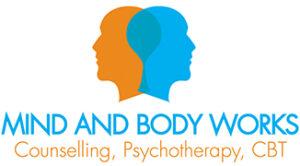When considering the exploration of self-esteem, healthy boundaries, and assertiveness, it is important to delve into the essence of boundaries and the experience of maintaining them and having them crossed. How does one discern between what feels right and fulfilling versus what feels wrong and disconcerting? It involves being centred within oneself, present in the moment, and reflecting on emotional responses such as anger and disappointment after social interactions. Examining these contrasting emotional states provides valuable insights into what aligns with our well-being and what does not in each situation. Developing an awareness of internal experiences, quieting the mind to connect with feelings and bodily sensations, and understanding the root of those emotions are essential practices in this journey.
Consider, for instance, the manifestation of anxiety—racing thoughts, tension, restlessness—arising from an interaction where personal boundaries felt violated. Simply experimenting with sensing an imaginary boundary around oneself and noticing the internal shifts when establishing this boundary may reveal a subtle sense of strength and completeness. In scenarios where anxiety might stem from a reluctance to assert oneself, the power of an honest “no” becomes evident—a commitment to self that enhances feelings of safety and peace. If such a sense of inner security is elusive, envision what it feels like to be truly at home within your own space. The inability to recall the last time one felt most authentic, most like themselves, signals underdeveloped boundaries—either excessively open or closed.
Becoming the captain of our own ships entails navigating boundaries, discerning what to allow in and what to keep out. Imagine facing harsh criticism while maintaining a solid, intact boundary, not absorbing hurtful comments but rather evaluating them from a grounded perspective. This skill fosters the ability to consider external input without being deeply affected by judgments,
criticisms, views, or opinions.
Understanding healthy boundaries and repairing ruptured ones is often not ingrained to our upbringing. Some may unconsciously adopt an open-door policy, absorbing external influences without critical evaluation, while others might be overly guarded due to past hurts. The good news is that, regardless of age, one can learn to cultivate healthy boundaries step by step, akin to building muscles or acquiring a new skill.
Yet, it is crucial to acknowledge that this process is ongoing, requiring dedication and effort. Establishing a routine of self-reflection on boundaries, staying attuned to your felt sense, and checking one’s integrity throughout the day are some constructive ways to solidify a sense of self and authenticity. Additionally, having an attitude of learning from experiences rather than
viewing challenges or setbacks as failures is very important.
Investing in one’s sense of self, boundaries, and self-esteem is paramount for mental well-being, which, in turn, influences overall health. Despite the natural inclination to avoid confronting insecurities and difficult emotions, facing these challenges in manageable steps contributes to personal growth. It is a journey that will also evoke discomfort but ultimately leads to increased self-esteem, confidence, and empowerment as you step outside your comfort zone in a deliberate and safe manner.
I am consistently struck by how people enthusiastically invest time and resources in various pursuits—hobbies, possessions, fitness routines, and more—yet overlook fundamental aspects like their self-perception, boundaries, and self-esteem, crucial pillars for mental well-being (directly impacting overall health). The reality is, we often resort to extreme measures to sidestep facing
our insecurities, fears, sadness, and emotional pain—understandably so, as nobody willingly wants to endure more suffering than necessary.
What often eludes us is the fact that, for our overall well-being, we must gradually confront these fears instead of going to great measures in avoiding them. This is often not a comfortable process, although we often feel empowered after confronting our fears in a skilled way. It involves facing discomfort and stepping into the unknown in measured, manageable increments. Persisting with the practice over time, you will consistently discover solid ground on the other side, even when the experience initially might feel akin to stepping off the edge of a cliff.
In the short term, heightened emotional turbulence and distress is common and expected. Yet, crucially, as we permit ourselves to confront these challenging feelings and sensations, we cultivate a resilient sense of self-esteem, confidence, and empowerment. The growth occurs precisely as we intentionally step beyond our comfort zones in a calculated, secure manner.

